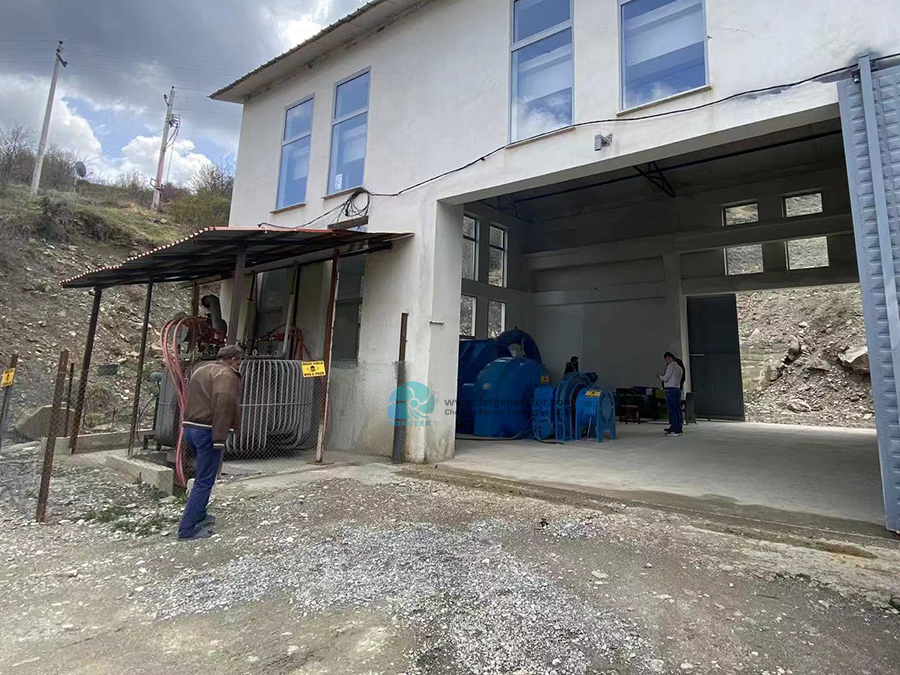Hydropower is a scientific technology that studies technical and economic issues such as engineering construction and production management. The water energy used in hydroelectric power generation is mainly the potential energy stored in water. In order to convert hydropower into electricity, different types of hydropower stations need to be built.
1. Basic introduction: Hydroelectric power utilization of rivers, lakes, etc. They are located at high altitudes and have potential energy, flowing towards low altitudes and converting the potential energy contained therein into kinetic energy of a water turbine, which is then used as power to drive a generator to generate electrical energy. Using hydraulic power (with water head) to drive the rotation of hydraulic machinery (water turbine), converting water energy into mechanical energy. If another type of machinery (generator) is connected to a water turbine, it can generate electricity as the turbine rotates, and then convert mechanical energy into electrical energy. In a sense, hydropower is the process of converting the potential energy of water into mechanical energy, and then into electrical energy. Due to the low power supply voltage generated by hydropower plants, if it is to be transmitted to remote users, it needs to be boosted through transformers, then transmitted to substations in user concentrated areas through air transmission lines, finally reduced to a voltage suitable for household users and factory electrical equipment, and then transmitted to various factories and households through distribution lines. 2、 The basic principle of hydroelectric power generation is to use the drop in water level to cooperate with a hydroelectric generator for power generation, that is, to convert the potential energy of water into the mechanical energy of the hydraulic turbine, and then use the mechanical energy to drive the generator to obtain electrical energy. Scientists have effectively utilized natural conditions such as flow engineering and mechanical physics by utilizing the declining water level. And they are carefully matched to achieve the highest power generation for people to use cheap and pollution-free electricity. Low water levels, on the other hand, absorb sunlight and circulate on Earth Friday, thereby restoring high water sources.
So far, the scale of hydroelectric power varies from several tens of watts used in rural areas of the Third World to several million watts used for power supply in large cities. 3. The main types are classified by concentrated drop, including dam type hydropower stations, diversion type hydropower stations, hybrid hydropower stations, tidal power stations, and pumped storage power stations. Based on the degree of runoff regulation, whether there are regulating hydropower stations or not. According to the nature of the water source, it is generally referred to as a conventional hydropower station, which uses natural rivers, lakes, and other water sources to generate electricity. Hydropower stations can be divided into high head (over 70 meters), medium head (15-70 meters), and low head (below 15 meters) hydropower stations based on their utilization head. According to the installed capacity of hydropower stations, they can be divided into large, medium, and small hydropower stations. Generally, small hydropower stations with an installed capacity of less than 5000 kilowatts are called small hydropower stations, those with an installed capacity between 5000 and 100000 kilowatts are called medium hydropower stations, and those with an installed capacity of over 100000 kilowatts are called large hydropower stations or giant hydropower stations. 4、 Advantage hydropower is an inexhaustible and renewable clean energy source. However, in order to effectively utilize natural water energy, it is necessary to manually construct hydraulic structures that can concentrate water flow drop and regulate flow, such as dams, diversion pipelines, and culverts. Therefore, the project investment is large and the construction cycle is long. But hydroelectric power generation has high efficiency, low power generation cost, fast unit startup, and easy adjustment. Due to the use of natural water flow, it is greatly affected by natural conditions. Hydropower is often an important component of comprehensive water resource utilization, forming a comprehensive water resource utilization system with shipping, aquaculture, irrigation, flood control, tourism, etc. Hydropower is a renewable energy source with minimal environmental impact. In addition to providing cheap electricity, it also has the following advantages: controlling floods, providing irrigation water, improving river navigation, and improving transportation, power supply, and economy in the region, especially developing tourism and aquaculture.
Post time: Apr-26-2023

